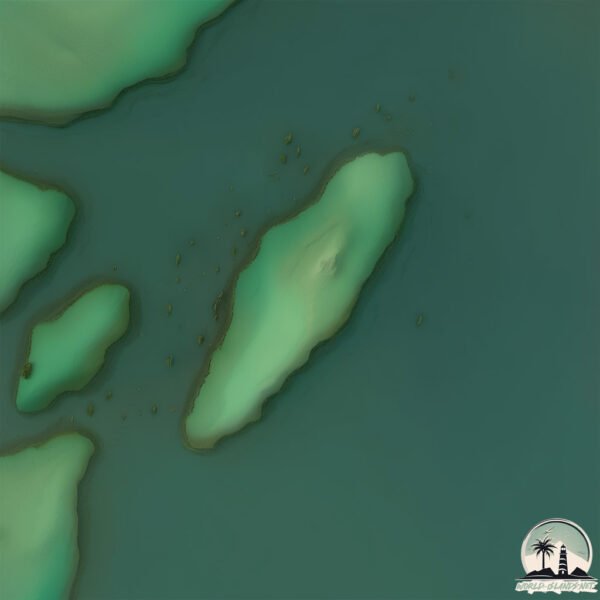Welcome to Îlet Vert , a Continental island in the Gulf of St. Lawrence, part of the majestic Atlantic Ocean. This guide offers a comprehensive overview of what makes Îlet Vert unique – from its geography and climate to its population, infrastructure, and beyond. Dive into the details:
Geography and size of Îlet Vert
Size: 0.172 km²Coastline: 2.6 kmOcean: Atlantic OceanSea: Gulf of St. LawrenceContinent: North America
Îlet Vert is a Tiny Island spanning 0.172 km² with a coastline of 2.6 km.
Archipel: –
Tectonic Plate: North America – Covers North America and parts of the Atlantic and Arctic Oceans, characterized by diverse geological features and varying levels of seismic activity.
The geographic heart of the island is pinpointed at these coordinates:
Climate and weather of Îlet Vert
Climate Zone: ContinentalClimate Details: Warm-Summer Humid Continental ClimateTemperature: Warm Summer
Climate Characteristics: Features warm summers and cold winters with consistent precipitation, common in higher latitudes.
Topography and nature of Îlet Vert
Timezone: UTC-05:00Timezone places: America/New_YorkMax. Elevation: 3 m Mean Elevation: 2 mVegetation: Deciduous Needleleaf ForestTree Coverage: 14%
The mean elevation is 2 m. The highest elevation on the island reaches approximately 3 meters above sea level. The island is characterized by Plains: Flat, low-lying lands characterized by a maximum elevation of up to 200 meters. On islands, plains are typically coastal lowlands or central flat areas.
Dominating Vegetation: Deciduous Needleleaf Forest
Vegetation: 2 vegetation zones – Low Diversity Island
Infrastructure and Travelling to Îlet Vert
Does the island have a public airport? no .
Does the island have a major port? no .
The mean population of Îlet Vert is 15 per km². Îlet Vert is Gently Populated. The island belongs to Canada .
Continuing your journey, Bouchard is the next notable island, situated merely km away.
The Fly By and Landing to Îlet Vert
Float plane water landing on the St. Lawrence River. PG2V+QW Varennes, Quebec.
The Fly By and Landing to Îlet Vert
Float plane water landing on the St. Lawrence River. PG2V+QW Varennes, ...
Float plane water landing on the St. Lawrence River. PG2V+QW Varennes, Quebec.
Fleuve St-Laurent, ilet Vert
À la pointe Est de l'ile de Montréal, entre l'ile Ste-Thérèse et ...
À la pointe Est de l'ile de Montréal, entre l'ile Ste-Thérèse et Varennes, se trouve l'ilet Vert. Cette journée là les vents étaient ...
SÉ ZOT KI KOZ : ILET QUINQUINA MONSIEUR JUSTINE
M. Justine nous emmène dans le lit de la Rivière d'Ilet Quinquina. ...
M. Justine nous emmène dans le lit de la Rivière d'Ilet Quinquina. Certains disent que cette ravine s'appelle "la Rivière des ...
Canada is classified as Developed region: G7: Group of Seven – Major advanced economies, including Canada, France, Germany, Italy, Japan, the United Kingdom, and the United States. The level of income is High income: OECD.
News – Latest Updates and Headlines from Îlet Vert
Stay informed with the most recent news and important headlines from Îlet Vert. Here’s a roundup of the latest developments.
Loading...
Please note: The data used here has been primarily extracted from satellite readings. Deviations from exact values may occur, particularly regarding the height of elevations and population density. Land area and coastline measurements refer to average values at mean high tide.

